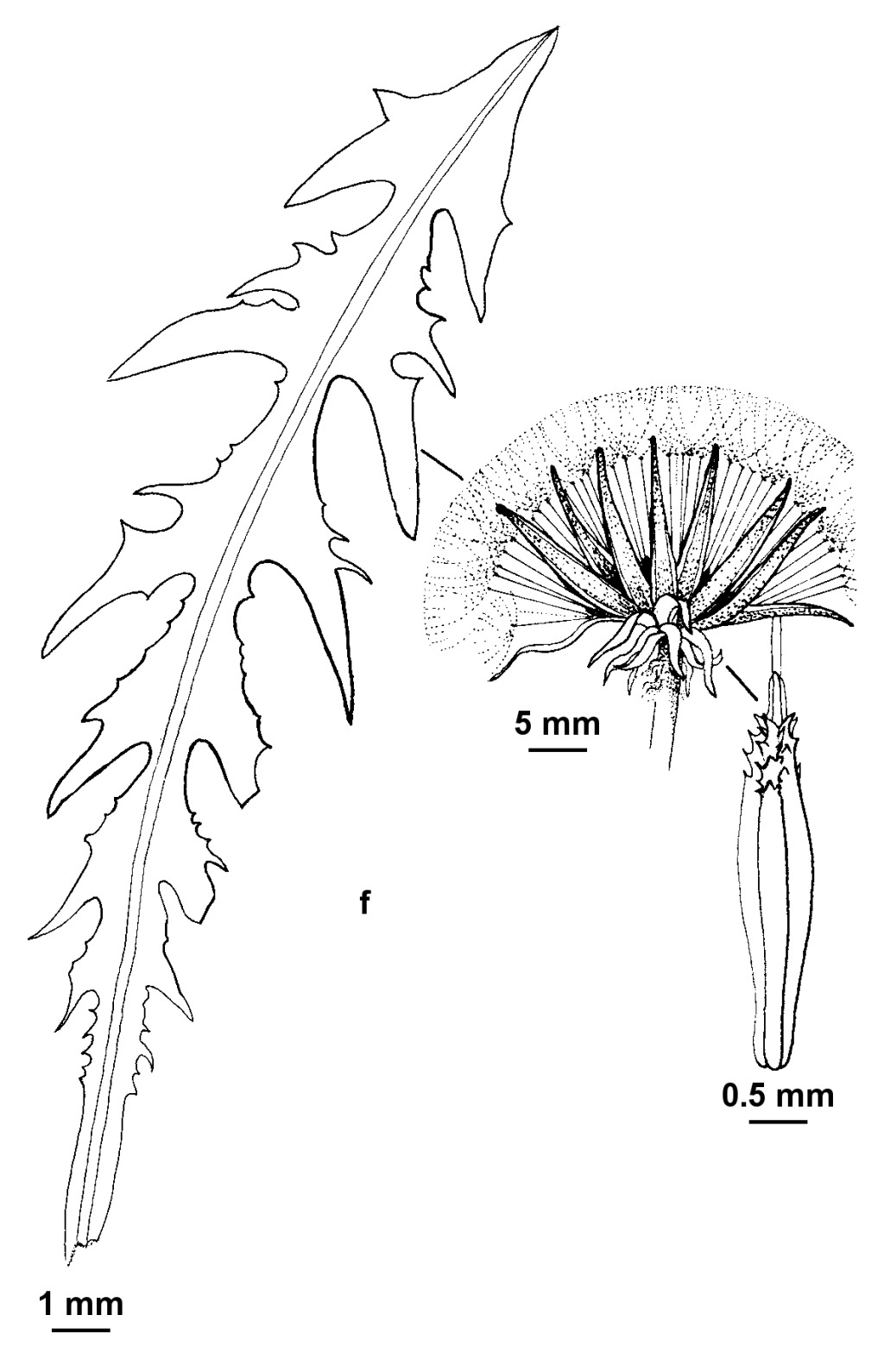Taraxacum sect. Hamata
H.Ollg.Leaves lanceolate to oblanceolate, c. 5–40 cm long, glabrescent; hamately and bluntly lobed; petioles and leaf midribs striate, i.e. with interwoven purple and green strands on upper surface (stomata present only on green strands). Capitula c. 4.5 cm diam.; outermost involucral bracts erect, patent or recurved, usually to different degrees within a single capitulum, ovate to ovate-lanceolate, c. 8–12 mm long, bordered or unbordered, not callus-tipped, glaucous on upper surface, dark green on lower surface; marginal ligules far exceeding involucre; pollen present; stigmas greenish-yellow. Cypselas turbinate, 3–4 mm long, pale to dark brown, spinulose or smooth at apex, smooth in lower two thirds; cone conical, 0.3–0.7 mm long; beak more than 3.5 mm long, always longer than cypsela body; pappus 5–6 mm long. Flowers Sept.–Apr.
Native to Europe. Grows in urban gardens, farmland and disturbed native grassland and grassy woodland from sea-level to the sub-alps.
 Spinning
Spinning

